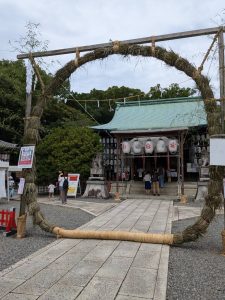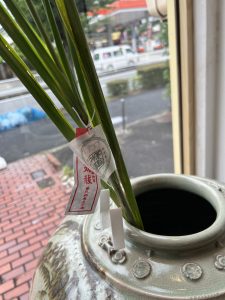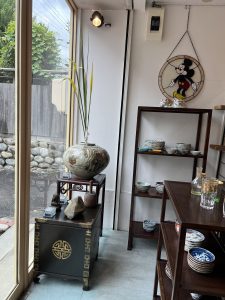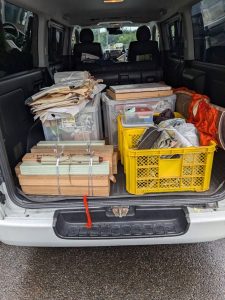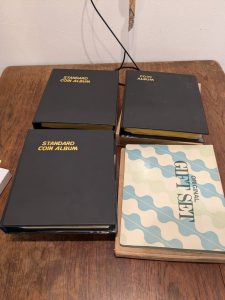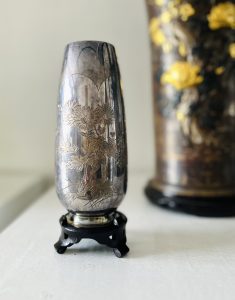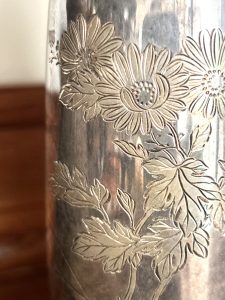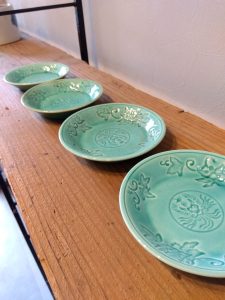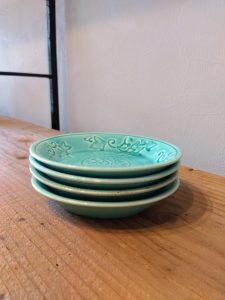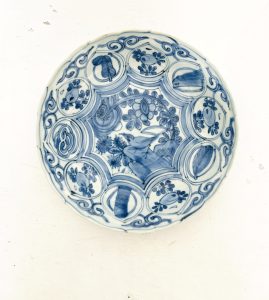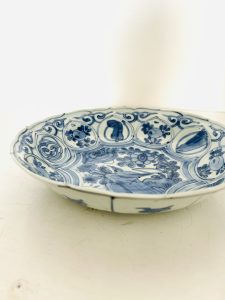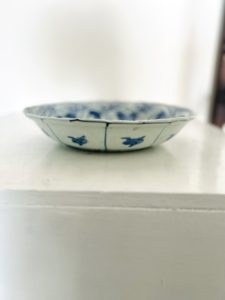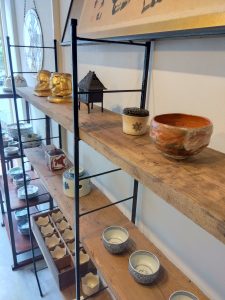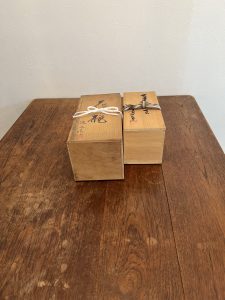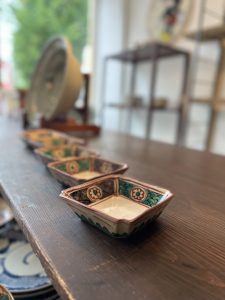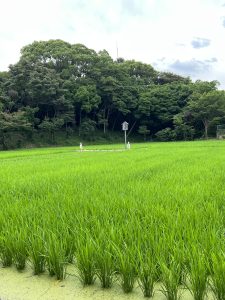あまり理解していなかった銀製品の純度とは(愛知県名古屋市千種区姫池通 骨董買取 古美術風光舎)
2024.07.17
皆さまこんにちは。スタッフHでございます。
前回のブログでは銀生産の歴史について綴りましたが、今回は銀の性質や銀製品の純度などについてお話したいと思います。
大航海時代を経て世界中に大量に流通するようになった銀。その後様々な銀製品となり人々の日常を彩ってきました。
現在では就職祝いや出産祝い、銀婚式や還暦、退職の記念品など人生の節目に贈り物として贈られることも多くなりました。ヨーロッパでは赤ちゃんに銀のスプーンで食事を与えると、その子は生涯食べ物に困ることがなく幸せな人生を送るとされ、出産祝いに銀のスプーンを贈る習慣もあります。
風光舎に陳列されている銀のケースも戦前に外務大臣より日本の実業家であった石坂泰三氏に贈呈された品です。味わいのある渋い光を放っております。
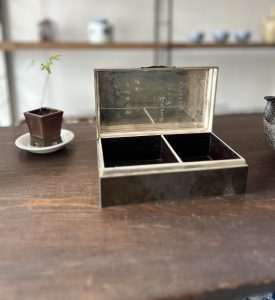
銀の純度は純銀を1000として合金に含まれる銀の割合を3桁の数字で表します。
銀製品を制作する際の銀の純度は、原則として925/1000以上とされていますが、商品により950/1000、970/1000などの純度のものも用いられます。銀は純度が高いほど柔らかく加工が難しくなり、キズもつきやすくなるため、割り金として銅など他の素材を増ぜることにより、製品に加工しやすい硬度を保ちます。
日本では現在、一般的に925/1000以上の純度のものが銀製品と呼ばれています。
銀の含有率が92.5%の「シルバー925」の刻印には「925」「SV925」「S925」などの表記があります。シルバー925の7.5%の割り金には大抵「銅」が用いられますが、他にも亜鉛、アルミニウム、ニッケル、コバルトが含まれることがあります。
シルバー925の中でも残りの7.5%の割り金に「銅」のみが使用されるものだけを「スターリングシルバー」と呼びます。スターリングシルバーは元々はイギリスの銀貨の純度を示していました。
日本ではジュエリー協会が定めた基準により、銅以外の金属を混ぜたものはスターリングシルバーとは名乗れないとされています。
スターリングシルバーは銅だけを割り金として使っているため純銀に近い白く明るい輝きを放ちます。シルバー925はやや黄味がかっていることもあり、ニッケルやコバルトが入っている場合は青みがかることもあります。ニッケルにアレルギー反応を起こす人もいるのでジュエリーとして使用する場合は注意が必要です。
スターリングシルバーとシルバー925はどちらも変色しやすい特徴があります。銀は空気中にわずかに含まれる硫黄分などと反応し、硫化銀となるためです。変色の度合いは日頃の手入れの仕方や使用頻度などにより変わるため、使用後に汚れを拭き取ったり、保管方法に気を配るなどの注意が必要です。
先日行われたテニスのウィンブルドン選手権では、男子の優勝者にはスターリングシルバーに金メッキが施された優勝カップ、女子の優勝者にはトロフィーとしてスターリングシルバー製の大皿「ローズウォーター・ディッシュ」が決勝後に手渡されます。実際には現物は博物館に保管され、優勝者にはミニチュアのレプリカが贈られるそうです。
五輪の金メダルも中身が銀だと知ったときは驚きましたが、選手にとってはそんな下世話な話はどうでもよく、もっと崇高な志をもって戦っているはずですね。
それでは、また次の機会に。
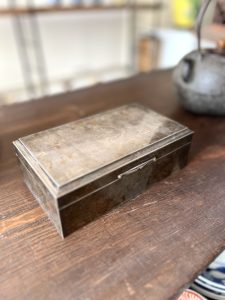
Hello everyone. This is Staff H.
In my previous blog, I wrote about the history of silver production, and this time I would like to talk about the properties of silver and the purity of silver products.
After the Age of Discovery, silver came to be distributed in large quantities all over the world. Since then, silver has been used in various kinds of silver products and has been a part of people’s daily lives.
Today, silver products are often given as gifts to celebrate milestones in people’s lives, such as job-hunting, childbirth, silver wedding, 60th birthday, and retirement. In Europe, it is said that if a baby is fed with a silver spoon, he or she will have a happy life and never have to worry about food for the rest of his or her life.
The silver case on display at Fuhkosha was also presented to Mr. Taizo Ishizaka, a Japanese businessman, by the Minister of Foreign Affairs before World War II. It emits an austere light with a taste.
The purity of silver is expressed as a three-digit number, with 1000 being pure silver and the percentage of silver contained in the alloy.
As a general rule, the purity of silver used in the production of silver products is 925/1000 or higher, but depending on the product, purities such as 950/1000 and 970/1000 may also be used. The higher the purity of silver, the softer and more difficult it is to process, and the more easily it scratches, so other materials such as copper are added as an alloy to maintain a hardness that makes it easy to process into products.
In Japan, silver products are generally called “silver products” if the purity is 925/1000 or higher.
Silver 925” with a silver content of 92.5% is stamped with ‘925,’ ‘SV925,’ ‘S925,’ etc. Copper” is usually used for the 7.5% split in silver 925, but zinc, aluminum, nickel, and cobalt may also be present.
Among 925 silver, only those pieces in which only copper is used as the remaining 7.5% of the alloy are called “sterling silver. Sterling silver originally denoted the purity of British silver coins.
In Japan, according to the standards set by the Jewelry Association of Japan, any metal mixed with metals other than copper cannot be called sterling silver.
Sterling silver is made of only copper as a split metal, giving it a bright white shine close to that of pure silver. Silver 925 may have a slightly yellowish tinge, and if it contains nickel or cobalt, it may have a bluish tinge. Some people have allergic reactions to nickel, so care should be taken when using it as jewelry.
Both sterling silver and 925 silver have a tendency to tarnish. This is because silver reacts with a small amount of sulfur in the air to form silver sulfide. The degree of discoloration depends on how the item is cared for and how often it is used, so care should be taken to wipe off any dirt after use and to be careful about how it is stored.
At the recent Wimbledon Tennis Championships, a gold-plated sterling silver men’s championship cup and a sterling silver “Rosewater Dish” platter as the women’s trophy are handed to the winners after the final. The actual items are kept in a museum, and the winners are given miniature replicas.
I was surprised when I learned that the gold medals in the Olympics were also silver, but I believe that the athletes are not concerned with such trivial matters and are competing with more noble aspirations.
I will see you next time.
*******************
ご実家の整理やお片付けなどをされている方のご相談などが多くございます。
お片付けなどくれぐれもご無理のないようになさってくださいませ。
風光舎では古美術品や骨董品の他にも絵画や宝石、趣味のお品など様々なジャンルのものを買受しております。
お片付けをされていて、こういうものでもいいのかしらと迷われているものでも、どうぞお気軽にご相談下さいませ。
また風光舎は、出張買取も強化しております。ご近所はもちろん、愛知県内、岐阜県、三重県その他の県へも出張いたします。
まずは、お電話お待ちしております。
愛知県名古屋市千種区姫池通
骨董 買取【古美術 風光舎 名古屋店】
TEL052(734)8444
10:00-18:00 OPEN


